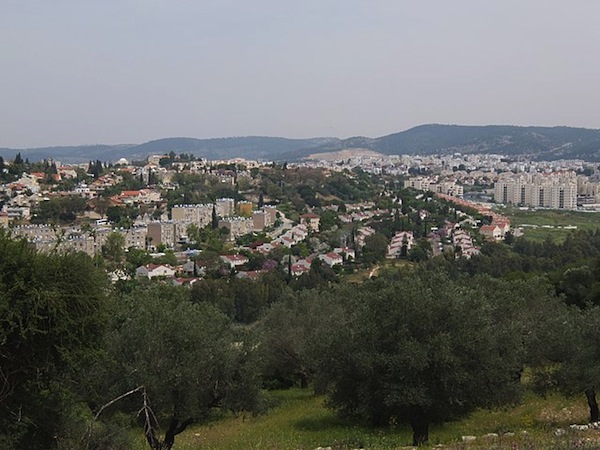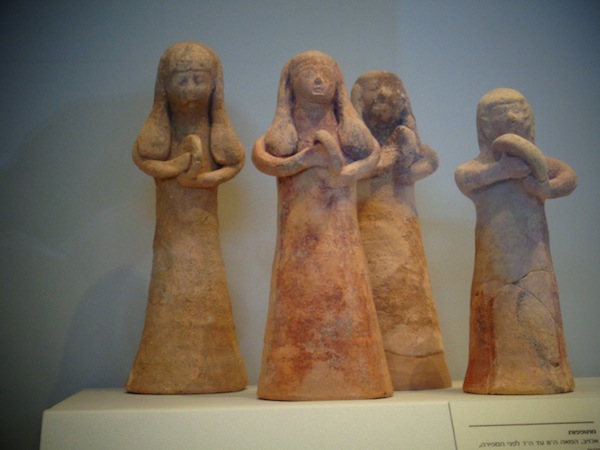Worn out by recent events? Me, too. For most of my work, I write things in advance to meet a deadline, but I can’t predict the future. Like Jewish balabustas (Yiddish for a woman who manages her household) throughout time, one way I cope is through working harder – by multitasking and planning ahead. I bake challah and meals in batches and freeze the extra. Why? So I can also work, take kids to medical appointments or even stop everything so I can sit down to help with math homework in those crucial moments before dinner.
Yet, we have a hard time calmly planning ahead when things feel out of control. Rising antisemitism, murders and crimes in the world affect us, as do natural disasters both locally and farther afield. These experiences can cause us to feel a sense of “trauma fatigue.” This can also be called “compassion fatigue,” and some say it particularly affects those in helping professions, like first responders, mental health and medical professionals, and social workers. However, it’s not limited to those people. Even bystanders to an event, who perhaps see footage on social media, on TV or in the newspaper, can be affected. Kids can be affected, too. We’re not immune to what this experience does.
Many react with a sort of post-traumatic stress syndrome. There may be an increased sense of panic or “fight or flight” feelings of adrenalin. Some people cannot sleep, or sleep too much. They have flashbacks to bad incidents that occurred, as well as physical symptoms. They may feel disassociated from themselves or others, and may feel less compassion for others in general. There are lots of symptoms associated with this. I’m not an expert.
However, I realized one morning as I walked my dogs that I felt weary and emotionally drained. It’s awful to hear about shootings of people at prayer, hate crimes and massive natural disasters like flooding. There are only so many times you can feel heartsick about these types of events before it takes a toll.
A recent New York Times editorial was an apology for an antisemitic cartoon that they printed. The editors acknowledged the creep of numbness and a lack of judgment when it printed this cartoon and when it came to recent anti-Jewish incidents. This numbness mirrored the New York Times’ and other newspapers’ historic failure to address the widespread rise in antisemitism in the 1930s and 1940s. The current editors pointed out the danger in this, apologized for one editor’s poor choices and the paper’s lack of oversight.
We’re all coping with a sort of numbness when it comes to the news cycles and increasingly frequent events. It’s hard to respond with equal amounts of compassion after every shooting or traumatic world disaster. What can we do to relieve this?
The following list is partial and includes both Jewish and general responses to stress.
- Shut off social media. Whether you’re Sabbath observant or not, find ways to silence your phone, newsfeed or other notifications for a few hours or days. Shut off the noise on occasion and step away from the news and alerts. It will calm your fight or flight instinct.
- Get outside. Take the ear buds out. Take a walk or run. Bring the dog, family, a friend or just your thoughts. Listen to the birds, squirrels, wind or the traffic. Give yourself a chance to exercise, be out in nature and smile at neighbours. See the world at a slower pace.
- Read a book. Escape fiction is not just for the beach. Find something engrossing to read and lose yourself in it for awhile. If fiction isn’t your thing, learn something new with non-fiction. Study Jewish texts, geography, geology or whatever interests you. Give yourself time for your mind to do something other than freak out.
- Practise deeds of loving kindness. Try every day to do something for others. It can be a thank you note, helping a friend or holding a door open for a stranger. Donate money or food to the food bank, volunteer or simply help clean up at home, work or synagogue. This is a Jewish way of keeping the world afloat.
- Prayer and meditation can help us remain calm and boost our health. Everyone differs on this topic. Some religious people feel prayer “protects” the faithful. Others are skeptical but hedge their bets. Even atheists can be aided with repetitive words or activities that help tune into this part of the brain. However you see this, it’s hard to refute the scientific evidence that being part of a religious community or meditating on your own can make a substantial difference to our health and well-being.
- Speak out. We can’t control much – not natural disasters or the actions of others. We can, however, work for what’s right. Judaism has a long history of social activism. While we may disagree in our opinions, we can still choose to advocate for what we believe. We feel less helpless when we talk with others who share our views and try to make positive change.
- Seek out support. It’s natural to feel anxious. This is a good time to seek out others at your congregation, community centre, workplace or school and talk about how you’ve been feeling. Talk to a therapist or a rabbi. Find time for friends, family and community members who care about you.
These are only some things that might help. It’s just a start, but, as the rabbis say, “The world stands on three things: Torah, prayer/service and deeds of loving kindness.” It’s true that life isn’t boring these days, but I’m wishing for a bit of boring. Here’s to enjoying some safe, quiet and calm, and peaceful, warm days ahead. Be well.
Joanne Seiff has written regularly for CBC Manitoba and various Jewish publications. She is the author of three books, including From the Outside In: Jewish Post Columns 2015-2016, a collection of essays available for digital download or as a paperback from Amazon. See more about her at joanneseiff.blogspot.com.



